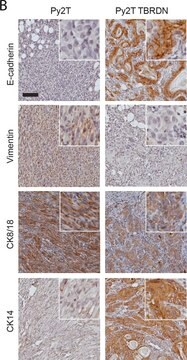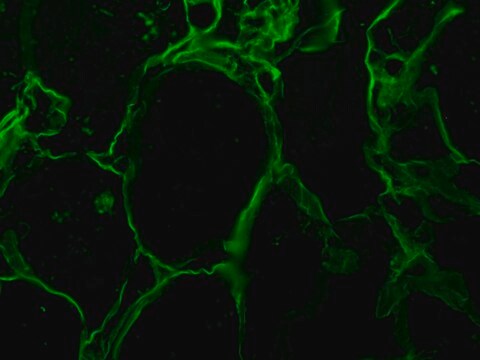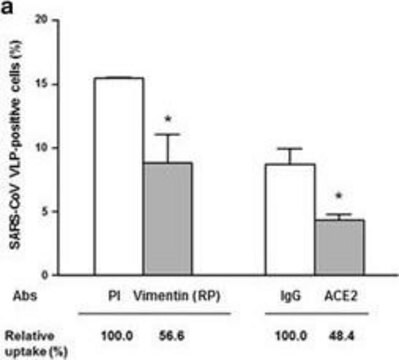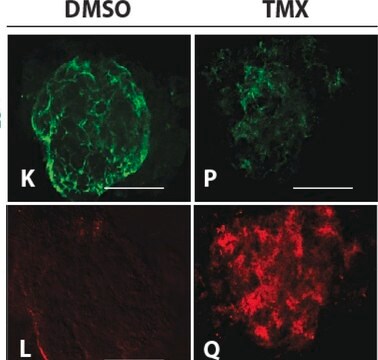C9080
Monoclonal Anti-Vimentin−Cy3 antibody produced in mouse
clone V9, purified immunoglobulin, buffered aqueous solution
Synonym(s):
Monoclonal Anti-Vimentin
About This Item
Recommended Products
biological source
mouse
Quality Level
conjugate
CY3 conjugate
antibody form
purified immunoglobulin
antibody product type
primary antibodies
clone
V9, monoclonal
form
buffered aqueous solution
mol wt
antigen ~58 kDa
species reactivity
pig, canine, feline, hamster, rabbit, gerbil, monkey, bovine, chicken, human, horse, rat
technique(s)
direct immunofluorescence: 1:200 using cultured cells
immunohistochemistry (formalin-fixed, paraffin-embedded sections): 1:50 using human tonsil
immunohistochemistry (frozen sections): suitable using human tonsil
isotype
IgG1
UniProt accession no.
shipped in
wet ice
storage temp.
2-8°C
target post-translational modification
unmodified
Gene Information
human ... VIM(7431)
rat ... Vim(81818)
Looking for similar products? Visit Product Comparison Guide
Related Categories
General description
Specificity
Immunogen
Application
- immunofluorescence and confocal microscopy
- cytoskeleton staining
- double labeling experiments
- immunohistochemical
- immunocytochemical localozation
Biochem/physiol Actions
Physical form
Storage and Stability
Legal Information
Disclaimer
Not finding the right product?
Try our Product Selector Tool.
Storage Class Code
10 - Combustible liquids
WGK
nwg
Flash Point(F)
Not applicable
Flash Point(C)
Not applicable
Personal Protective Equipment
Choose from one of the most recent versions:
Already Own This Product?
Find documentation for the products that you have recently purchased in the Document Library.
Customers Also Viewed
Our team of scientists has experience in all areas of research including Life Science, Material Science, Chemical Synthesis, Chromatography, Analytical and many others.
Contact Technical Service









